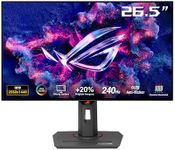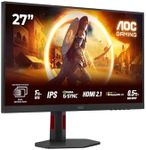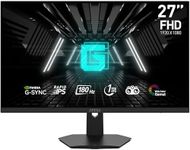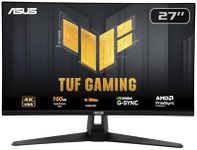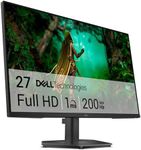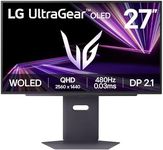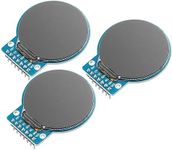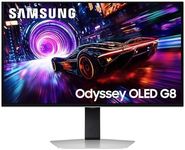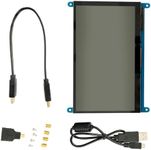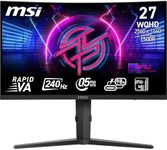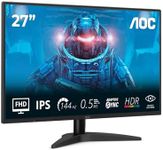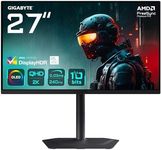Buying Guide for the Best 27 Inch Gaming Monitors
Choosing the right 27-inch gaming monitor can significantly enhance your gaming experience. The size is ideal for immersive gameplay, offering a good balance between screen real estate and desk space. When selecting a gaming monitor, it's important to consider various specifications that can impact your gaming performance and visual experience. Understanding these specs will help you make an informed decision that aligns with your gaming needs and preferences.ResolutionResolution refers to the number of pixels that make up the display. A higher resolution means more pixels, resulting in sharper and more detailed images. For a 27-inch monitor, common resolutions include 1080p (Full HD), 1440p (Quad HD), and 4K (Ultra HD). 1080p is suitable for budget-conscious gamers or those with less powerful graphics cards. 1440p offers a good balance of clarity and performance, making it a popular choice for many gamers. 4K provides the highest level of detail but requires a powerful graphics card to run smoothly. Choose a resolution that matches your gaming setup and performance expectations.
Refresh RateThe refresh rate is the number of times the monitor updates with new information per second, measured in hertz (Hz). A higher refresh rate results in smoother motion and can give you a competitive edge in fast-paced games. Common refresh rates for gaming monitors are 60Hz, 120Hz, 144Hz, and 240Hz. 60Hz is the standard for general use, but for gaming, 120Hz or 144Hz is recommended for a smoother experience. 240Hz is ideal for competitive gamers who need the fastest response times. Consider your gaming style and the capabilities of your graphics card when choosing a refresh rate.
Response TimeResponse time measures how quickly a pixel can change from one color to another, usually in milliseconds (ms). Lower response times reduce motion blur and ghosting, which is crucial for fast-paced games. Typical response times for gaming monitors range from 1ms to 5ms. A 1ms response time is ideal for competitive gaming, ensuring minimal lag and clear visuals. If you're a casual gamer, a response time of up to 5ms may be sufficient. Consider how important fast and clear visuals are to your gaming experience when selecting a response time.
Panel TypeThe panel type affects the monitor's color accuracy, viewing angles, and response time. The most common panel types are TN (Twisted Nematic), IPS (In-Plane Switching), and VA (Vertical Alignment). TN panels offer the fastest response times and are often cheaper, but they have poorer color reproduction and viewing angles. IPS panels provide better color accuracy and wider viewing angles, making them great for visually rich games, though they may have slightly slower response times. VA panels offer the best contrast ratios and good color reproduction, but can have slower response times. Choose a panel type based on your priorities, whether it's speed, color quality, or viewing angles.
Adaptive Sync TechnologyAdaptive sync technology, such as NVIDIA G-Sync or AMD FreeSync, helps eliminate screen tearing and stuttering by synchronizing the monitor's refresh rate with the graphics card's frame rate. This results in smoother gameplay and a more immersive experience. G-Sync is typically found in monitors with NVIDIA graphics cards, while FreeSync is compatible with AMD cards. If you experience screen tearing or stuttering, or if you want the smoothest possible gameplay, consider a monitor with adaptive sync technology that matches your graphics card.
